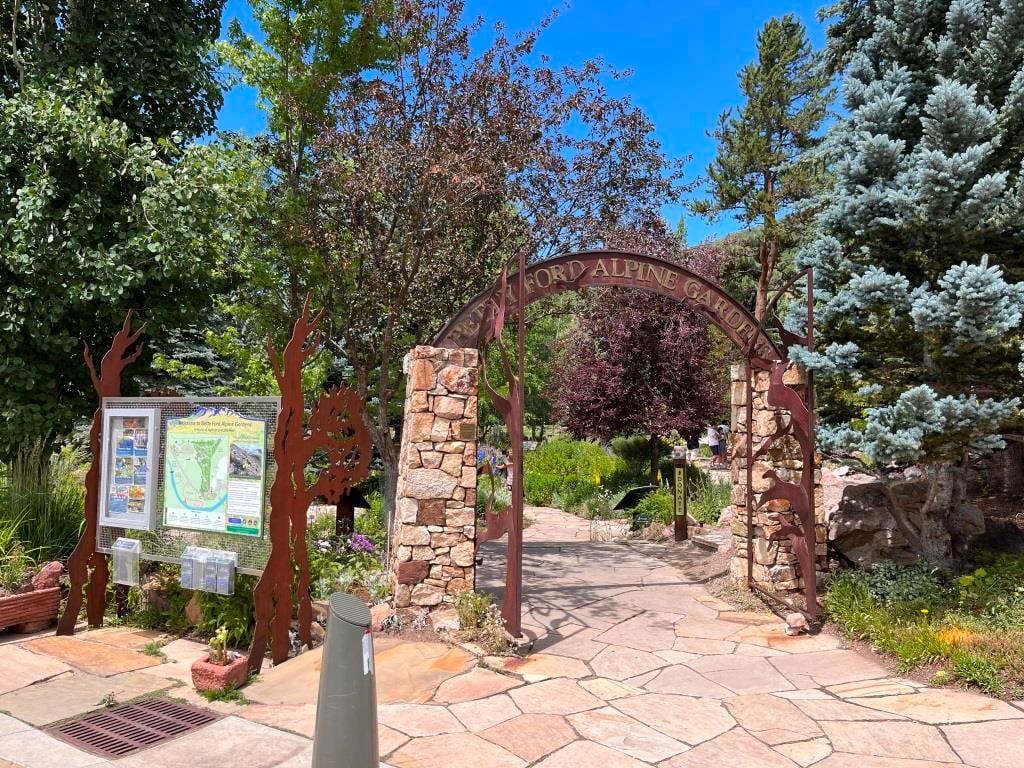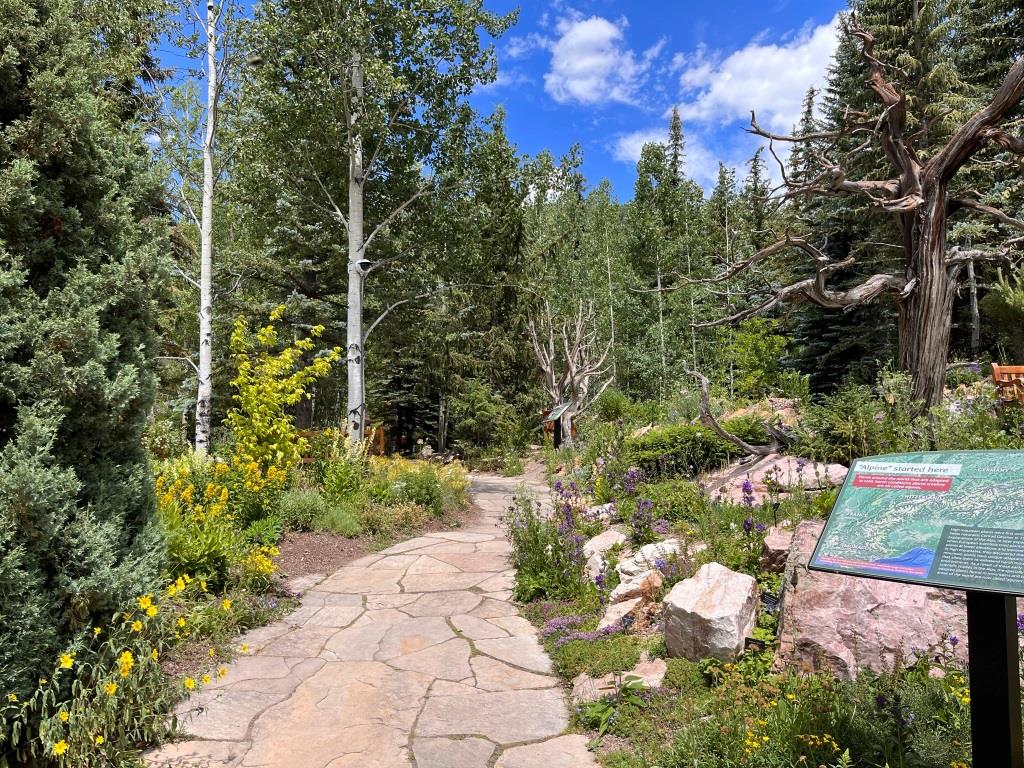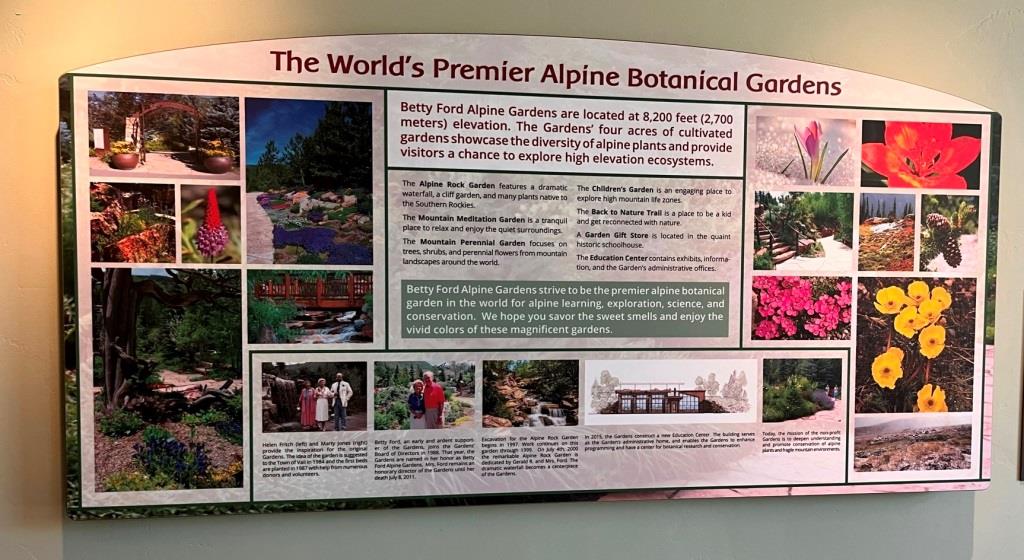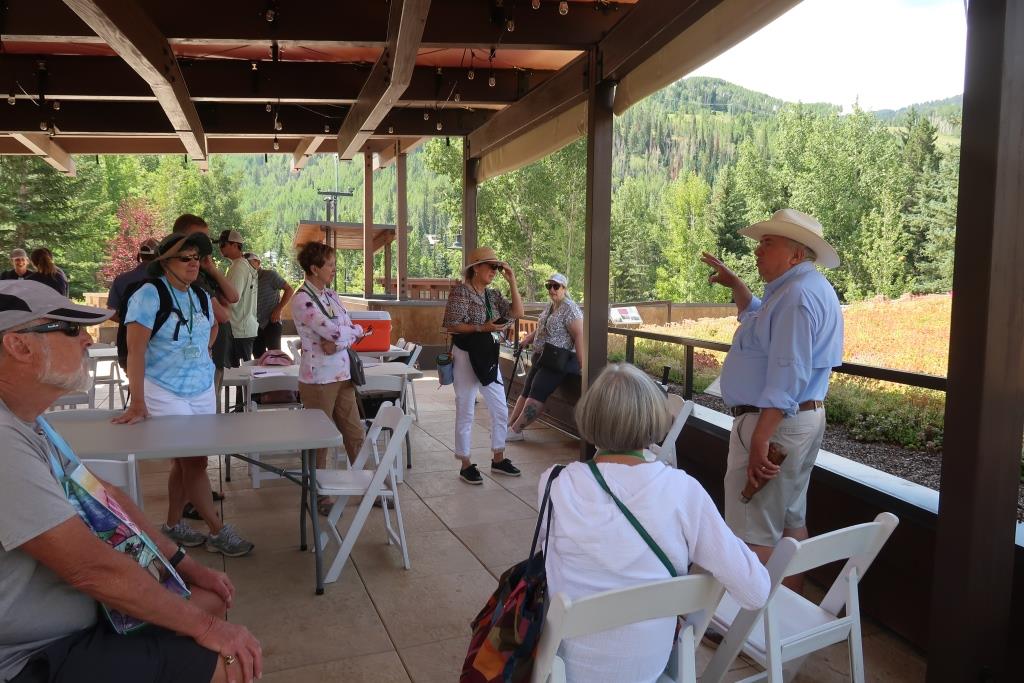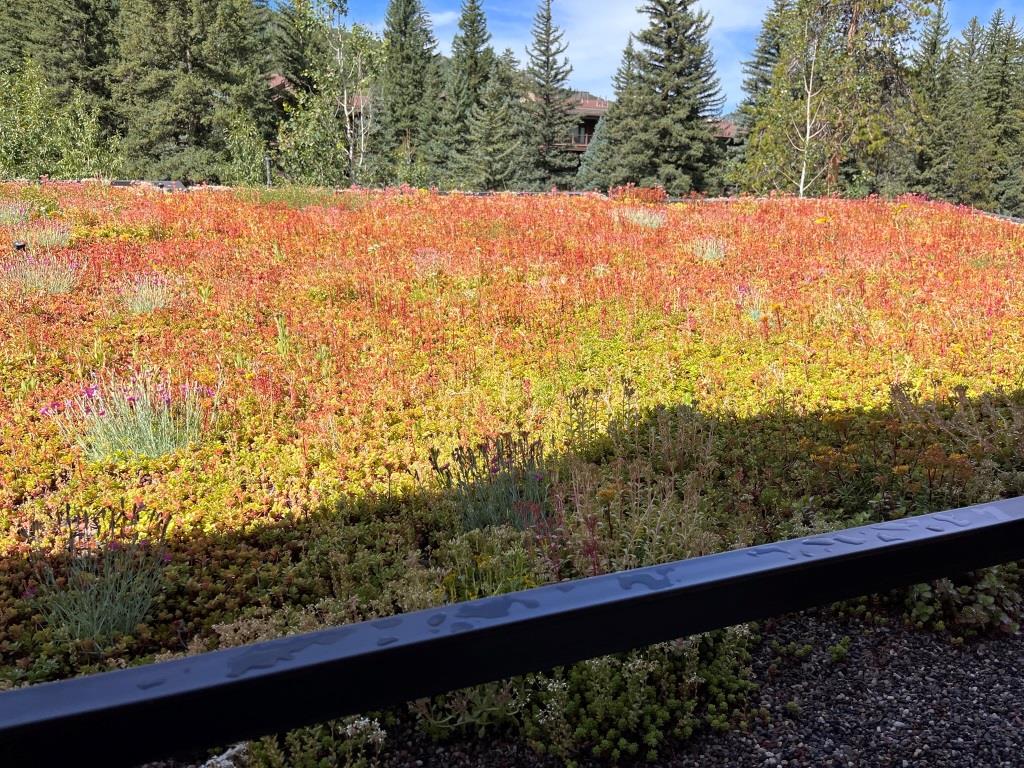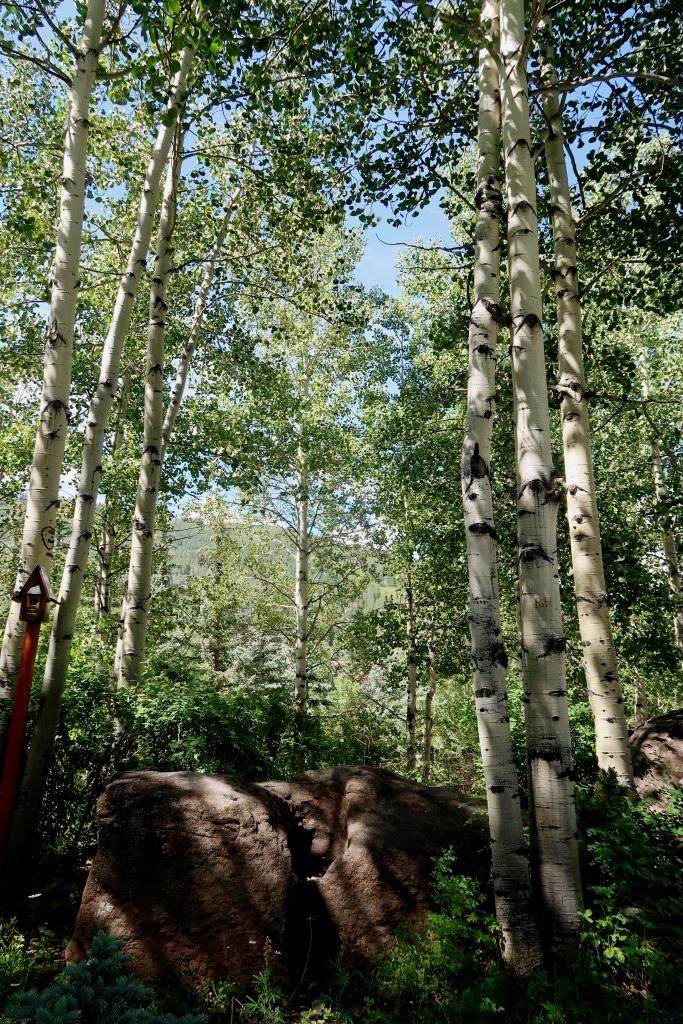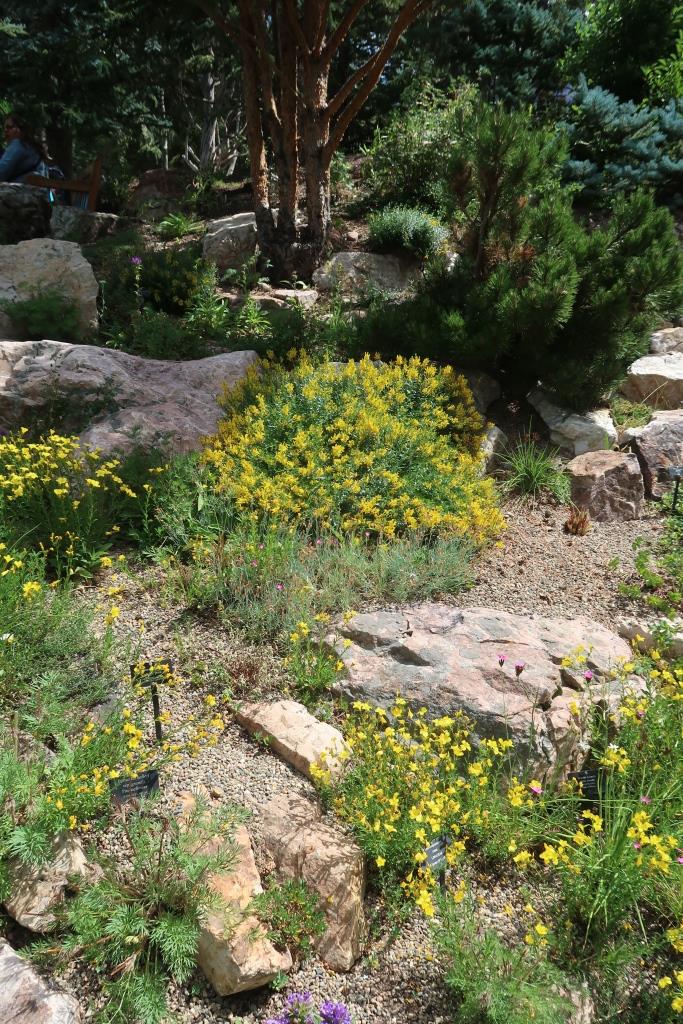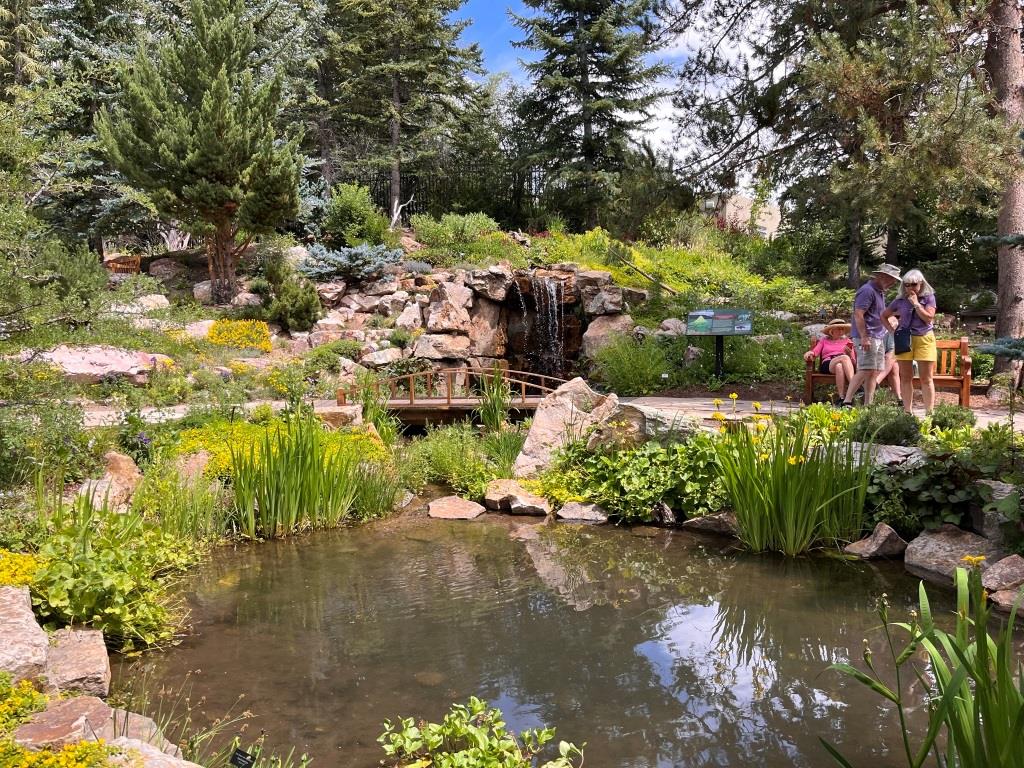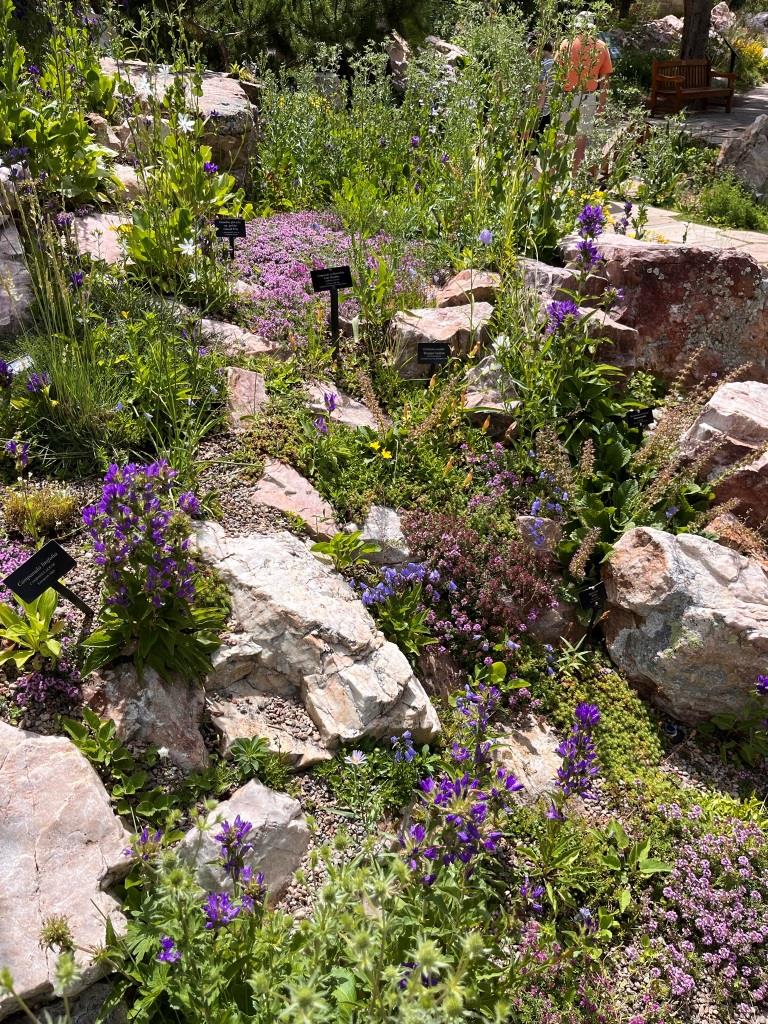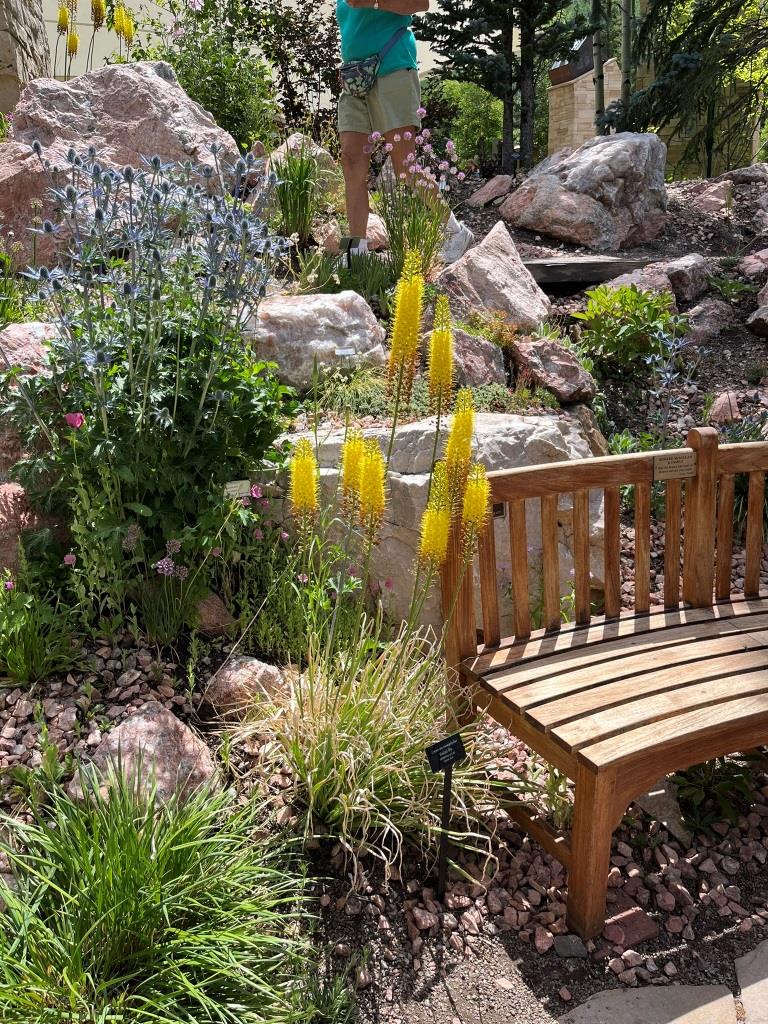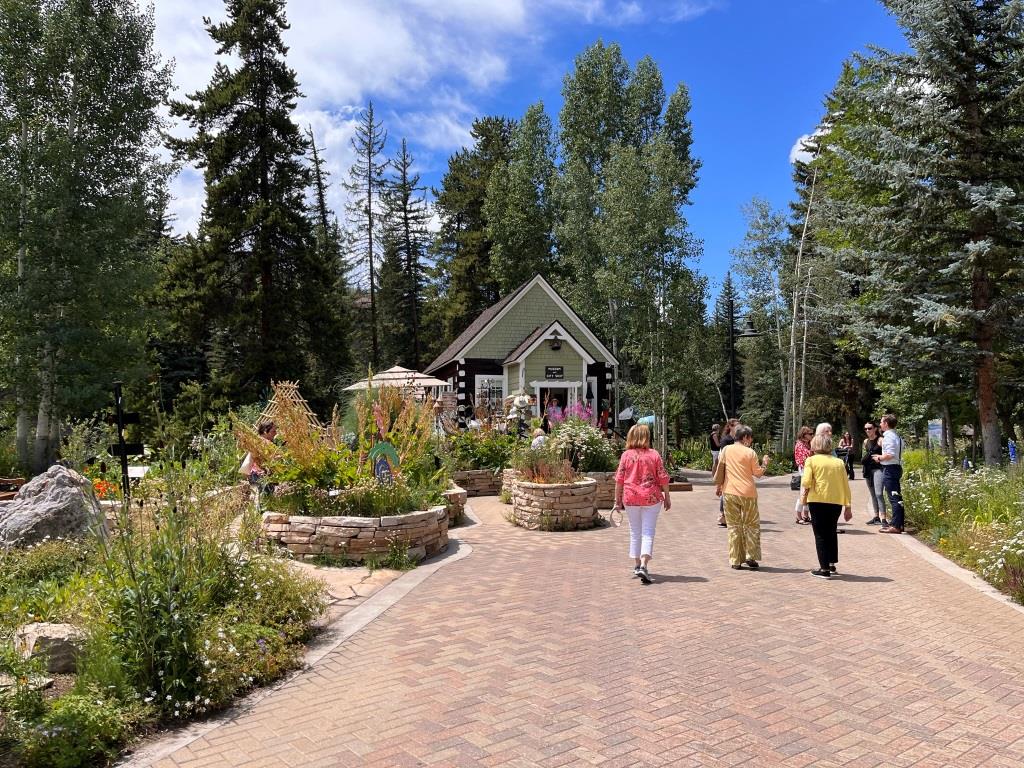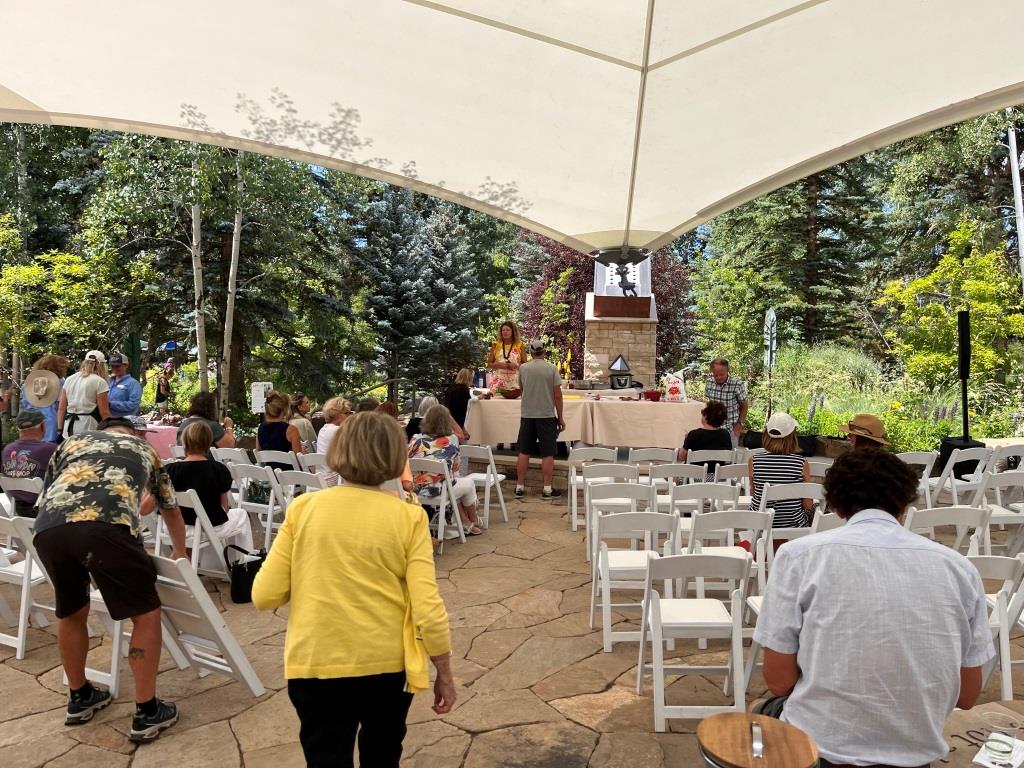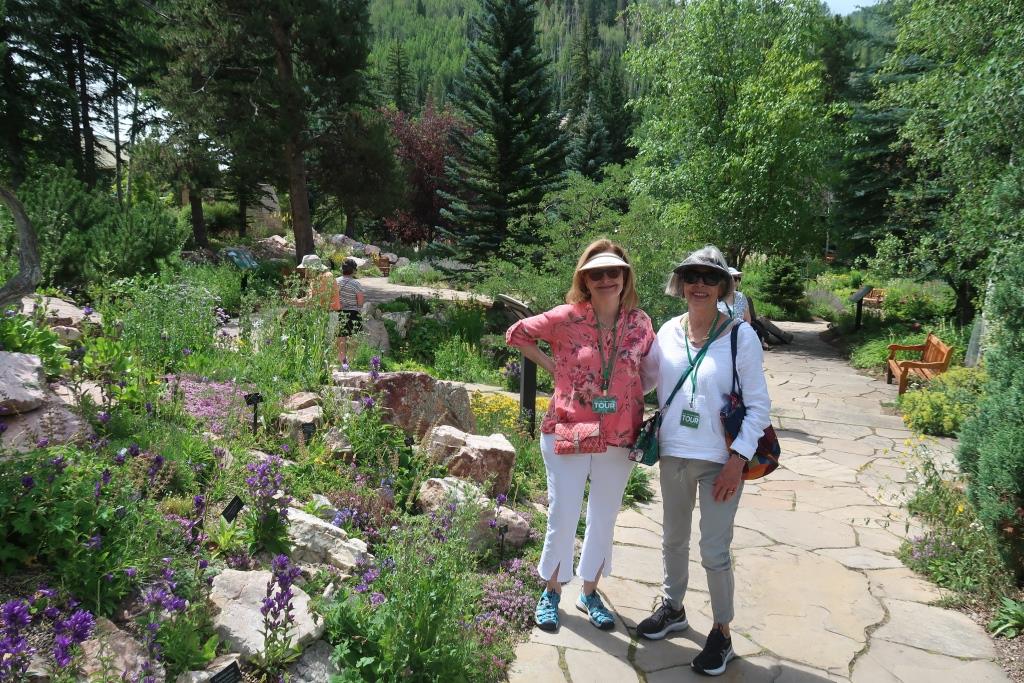The Betty Ford Alpine Gardens in Vail, Colorado
s an absolute treasure. Founded in 1985, they were named for Betty Ford in 1988. The gardens are laid out beautifully, and considered one of the largest alpine gardens in the world. They collect plants from all over the world, and bank seeds from wild populations to preserve species for future generations.
Surprising to me, while there are an estimated 1.3 million visitors to Vail, CO annually, the gardens only have 120,000 annual visitors. It is a hidden treasure.
The gardens are open 365 days a year from dawn to dusk at no charge, but you can have a guided tour on Tuesdays and Thursdays for $10 a person.
They have hundreds of volunteers of all ages. Many were out working in the garden, since volunteer days are Tuesdays and Thursdays, and we went on a Thursday. We saw huge groups of young people digging up invasive species, and older adults planting and thinning existing plants.
The gardens are divided into various components.
We started at the visitor’s center
where there are some interactive displays and a small greenhouse. We had a great guide, who was also a Master Gardener.
Up a slight hill there is a covered education center that looks onto a green roof that is planted in succulents.
Next is a pollinator garden.
At the top of the gardens is the Rocky Mountain ecosystems garden where we saw fields of aspen
and bristlecone pines. We learned some interesting facts about aspen trees. Aspen trees, which are members of the poplar family, grow in colonies, all arising from the same tree, forming one huge organism. They can live between 40 – 150 years old, but the root system can live even longer, generating more trees. The bark of an aspen tree is thin and white with a layer of green underneath that allows the aspen tree to continue to photosynthesize during the winter months, when other trees are dormant. The white powdery coating also can serve as a natural sunscreen. The bark also contains analgesics which some animals are said to use as a remedy for pain during birthing. The bristlecone pine
is one of the oldest species on earth.
The next garden was the Alpine Plants of the World with plants collected worldwide.
At the bottom of the garden was the Taming the Mountain West garden
which contained the most color. This was also the original, and thus the oldest part of the garden.
We saw beautiful collections of annuals, perennials and woody plants.
Some were divided by color. Across from the main entrance was the children’s garden and a great gift shop.
Adjacent to the gardens is the Ford Amphitheater which is home to a variety of performances. Divided into two sections, we were in the smaller area for the Chef’s in the Garden series.
At the top was a larger theater which was temporarily closed for rehearsals for an evening performance. This garden was well-designed and loaded with plants. Our guide told us they do tours with snowshoes in the winter. It is sad that more people don’t take advantage of this beautiful garden. We thoroughly enjoyed it.
If you ever find yourself near Vail, take time to visit. It will be well worth your time.
